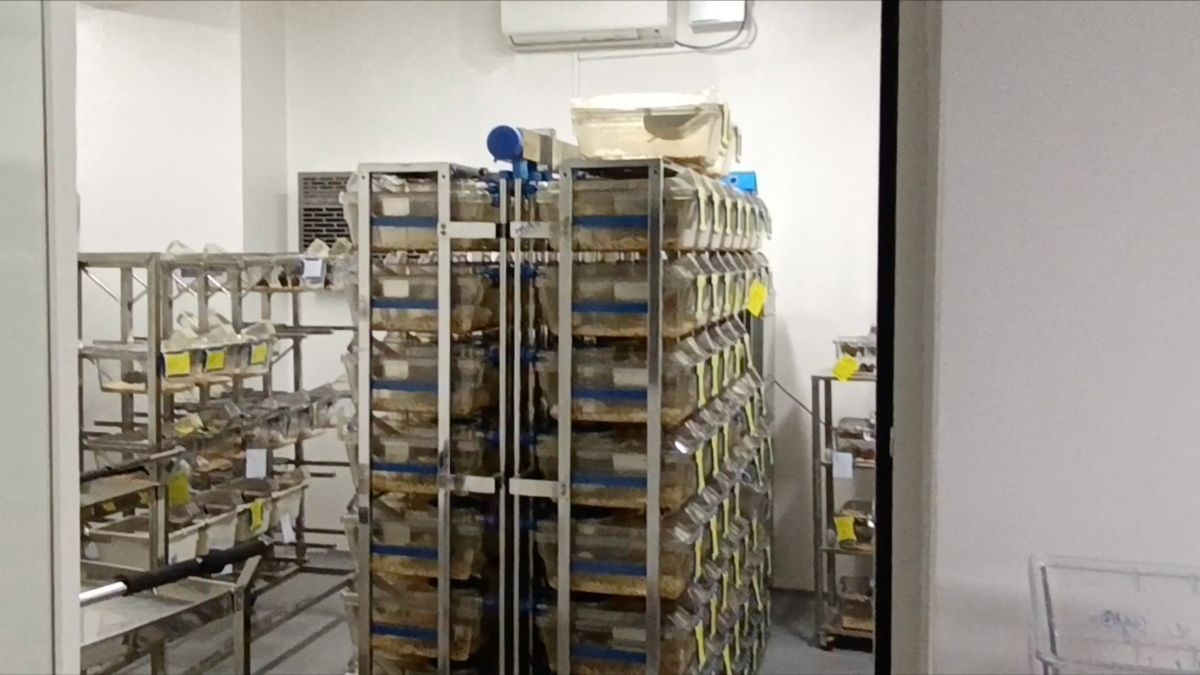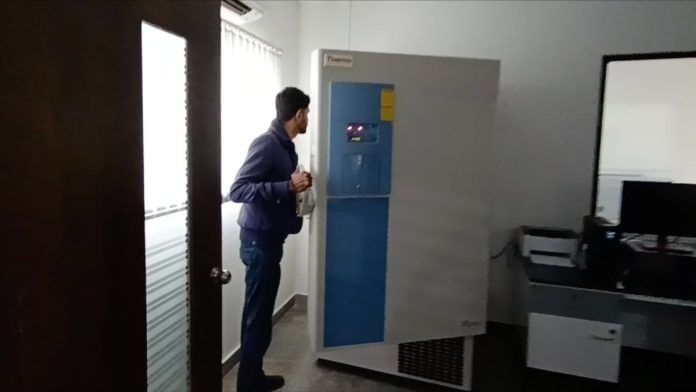Bengaluru: Akshay Rajeev spent three months trying to solve the mystery of his fractured toe. The X-rays showed the bones had healed. “But I could still feel pain that made me limp,” said Rajeev, an architect from Kerala. He was always on edge, worried that the excruciating pain would come back.
Then he met orthopaedic physician Dr Muraleedharan K at a private hospital in Kozhikode, who told him that he could be suffering from Complex Regional Pain Syndrome (CRPS).
The answer to what triggers this chronic pain—greater than what is expected from an injury—has baffled scientists the world over. It was only last June that Stanford researchers found that CRPS can also be due to a dysregulated immune system after a trauma. A silver bullet that does not have detrimental side effects such as addiction remains elusive.
Indian neuroscientists, physicians, and even biotech entrepreneurs are in pursuit of understanding pain. At the Indian Institute of Science, Bengaluru, researchers have dedicated an entire laboratory to exploring how hunger pathways in the body can be a solution to managing pain. In Delhi, biotech entrepreneurs are trying to formulate a magic pill by understanding how cannabinoids can ease chronic pain.
And in Bengaluru, physicians are eavesdropping on neuron conversations in the brain, while others are exploring ways of pain management through understanding how protein works in the body to tackle arthritis-related pain.
But the country still lags in fundamental research when compared to the US and Europe due to a lack of funds, infrastructure and research output. The landscape is gradually growing with a bigger market for pain medications and support for chronic pain. But the growth will stall in the next decade unless India treats chronic pain as a public health issue.
The researchers who are already in pursuit of pain alleviation are also mindful of the form this medication takes.
“There is some inherent mechanism in the brain that can suppress pain. If you can harness and leverage this mechanism, that would be a much better candidate than something that is exogenously given,” said Arnab Barik, a neuroscientist at IISC’s Centre for Neuroscience.
Also read: India’s research crime is getting worse. Scientists are gaming peer review system
A symphony of agony
Arnab Barik, along with his team of 13 researchers and 300 mouse models, is exploring a pathway of hunger and stress to look for better ways to manage pain.
“While active stress suppresses pain, chronic stress can make it worse,” said Barik, whose research is partly funded by TCG Crest Chinta, a neuroscience institute in Kolkata. He wants to explore the location at which the stress signal converges with pain.

It’s a deceptively simple exploration: First, find out how stress affects pain. Then, explore ways to alleviate pain without causing stress to the body.
Whether it is the stress pathway or not is of little importance, according to Barik. All he has to do is hit the target where the stress signal reaches in the brain.
Barik’s latest finding in the spinal cord opens new avenues of research. He found that the rostral ventromedial medulla (RVM)—a neural structure in the brainstem that plays a key role in sending and inhibiting pain signals down the spinal cord—also has a significant relationship with the upward communication to the brain.
He is now trying to understand how this can be used to suppress pain. His study is in the pre-print stage at a peer-reviewed journal.
The adult human spinal cord is only 17-18 inches long, but the neural network’s secrets are still being unravelled. In 1965, Canadian psychologist Ronald Melzack and British physiologist Patrick Wall gave a fillip to the then three-century-old theory of pain proposed by René Descartes. The 17th-century French philosopher and scientist defined pain as a physical phenomenon–an injury that stimulates nerves, which then transmits an impulse to the brain. This, in turn, causes the brain to perceive that pain.
The analogy Descartes used was that of a bell tied to a rope, and pain is just a ring when someone claps the rope. But Melzack and Patrick argued that the dorsal horn region in the spinal cord plays a cameo role. Their radical suggestion was that the spinal cord region in the pain perception was not only controlled by the signals from sensory nerves, but also by mood, gender, and beliefs.
The theory largely works well, except in the case of people like Rajeev, where even if the rope and clapper are absent, the bell still can ring.
Twenty years later, Melzack revisited his theory and found that pain is more than just a signal felt in the brain. Injury indeed produces nerve signals through the spinal cord to feel pain, but the brain can decide to produce pain sensations even in the absence of nerve signals triggered by injury.
Today, the scientific community agrees that pain is a neuromodule which can be triggered by changes in different parts of the brain.
“Pain is a symphony—a complex response that includes not just a distinct sensation but also motor activity, a change in emotion, a focusing of attention, a brand new memory,” wrote American surgeon and author Atul Gawande in his book Complications.
Rajeev can still remember the pain he used to feel when he went to bed. The age-old advice of bed rest was counterintuitive for him. It just triggered his pain perception.
“The purpose of pain is to make you focus on something that is wrong in your body and needs attention,” explained Deepak Kumar Saini, Professor, Department of Developmental Biology & Genetics at Indian Institute of Science (IISc).
Barik’s team are trying to knock on pathways through the communication from RVM to reach the brain’s area to trigger neuromodulators to suppress the perception of pain.
“We found that those emotional components are disturbed. Now, we are trying to look at how (RVM) is doing it. And if we can target these neuromodulators, we might be able to get rid of pills with side effects. But we don’t have a strategy for how to do it,” said Barik.
Also read: More Indians are seeking moksha through science. Medical colleges have surplus corpses now
Pain and protein
While Barik and team are trying to understand how pain is perceived in the brain, a bio-tech entrepreneur in Bengaluru is tackling it through proteins. Anirudha Lakshminarasimhan’s start-up PawThNeo is only eight months old, but it’s backed by his two decades of experience in the drug discovery and protein sector. He wants to study how proteins work inside the body to manage pain related to arthritis.
His rescue dog, Goldie, kick-started this journey of discovery. Ever since Goldie developed age-related arthritis, she’s become aloof and scrawny. His start-up is now incubated inside Jyothy Institute of Technology and supported by the central government’s Atal Incubation Centre.
“There are some antibodies for osteoarthritis, which are in clinical trials and have been approved for dogs. But for humans, these antibodies were not approved and were also found to have some side effects. My objective is to come up with something that is as natural as possible,” said Lakshminarasimhan.
He wants to develop a protein-based therapeutic for managing arthritis related pain. The idea is to select a fragment of the target protein that plays a role in arthritis and use it as a therapeutic agent for managing pain.
This particular protein naturally exists in full length within the body. The start-up focuses on a “reductionistic approach” to separate the protein and tweak it to function slightly differently than the whole protein in the body.
“This is not really a cure, but only management of pain. The protein therapeutic can also be catered to the niche population who have comorbidities and can also be administered long term,” Lakshminarasimhan added.

In arthritis, these proteins often come up as a response to the inflammation. Fibronectin is one such protein. Studies have shown that fragments of fibronectin can be used as a therapeutic to suppress inflammation when slightly altered.
There is literature supporting the use of food products such as turmeric, ginger, and glucosamine to manage arthritis related pain. Further preventive measures involve lifestyle changes like regular modification to avoid joint tears. But all of these are not universally scientifically validated.
“What is working for one set of individuals may not work for another group. When you are coming up with a therapeutic, it needs to be scientifically validated,” said Lakshminarasimhan.
The biggest challenge for him is to figure out the dosage that needs to be administered and to understand the right way to infuse it. The research is at a very early stage, he said.
While such early-stage research may reap rewards in the future, many people waiting to be relieved of their pain are looking for quick solutions. Rajeev was fortunate enough to meet the doctor who realised he had CRPS and prescribed specific drugs to treat that pain. But for millions of patients battling pain, changes have to be made at the policy level.
Also read: India’s top students wanted to be doctors. Not anymore
Careful narcotic knock
India may be one of the largest producers of morphine in the world, but Indian patients are still not able to access opioid-based pain medicines.
India’s Narcotic Drugs and Psychotropic Substances Act, introduced in 1985, restricted the use of opioids even for palliative care. Even though a 2014 amendment to the Act relaxed these restrictions, the stigma continues.
“That (ban) affected us because in my generation (of doctors), we all grew up without proper practice on the use of opioids for palliative care,” said Sahadev Shankarappa, a neuroscientist and professor at the Department of Biotechnology at Ramaiah University of Applied Sciences, Bengaluru.
The reason for this difficulty in accessing palliative care is reportedly due to policy barriers and a lack of awareness among physicians on how to judiciously use opioids.
But in the 10 years since the easing of the NDPS Act, the Indian opioid analgesics market has grown.
“What we realised is that actually India has a more enabling regulatory regime than Canada or the US. If you want to make pharmaceutical drugs, then there is absolutely no restriction, at least in the rules, when it comes to accessing psychotropic substances [for] your entire suite of pharmacological investigations,” said Raghav Priyadarshi, CEO, Savikalpa Sciences, a Delhi-based deep tech pharma start-up which focuses on pain management.

Priyadarshi and the team, with the help of researchers, developed pain relief medicines from cannabinoid medicine for conditions like migraines, which are now available commercially. Their medicated creams and oils, sold under the brand Shunyata Pain, claim to ease migraine headaches and even pain caused by cancer. A 100 ml bottle of Shunyata Pain Relief Oil retails for a price of Rs 1,399.
The opioid analgesics market is expected to grow from $48.5 billion in 2025 to about $77.5 billion by 2035. But it’s yet to be seen how open physicians will be in prescribing them.
“There are a lot of regulatory hurdles that do exist. Even though the laws allow it, translation of the laws in practice and actually enabling access to controlled substances is another matter altogether,” Priyadarshi said.
The topmost hurdle to effective pain treatment is the failure of governments to put together a drug supply system.
“Of course, the government also has a safe ground in saying that it could be misused. But that is something where policy experts have to put their heads in and see how to prevent and at least get these patients what they need,” said Shankarappa.
(Edited by Theres Sudeep)






